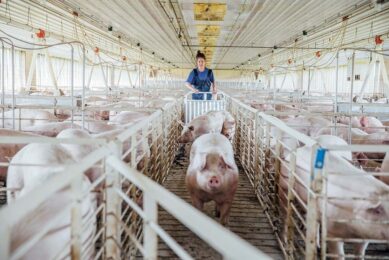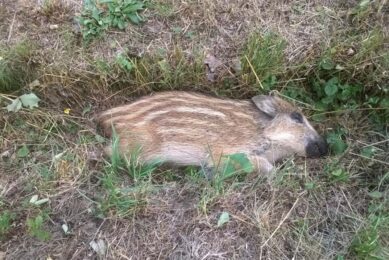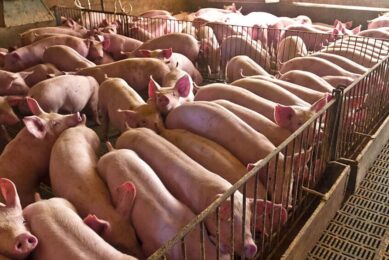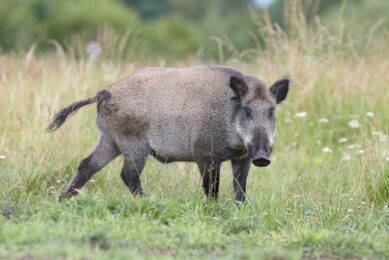ASF Haiti: Virus spreads to the north of peninsula

It can hardly be called a surprise that African Swine Fever (ASF) has spread to other areas of Haiti. The virus was also found in the north of the country, making it likely that ASF has spread to all areas of Hispaniola island.
The latest discoveries show that the virus continues to require extreme vigilance. The entire North American continent is praying that the virus will stay contained on Hispaniola island, which Haiti shares with the Dominican Republic, and where ASF has been reported from since April 10.
ASF virus in 3 more departments in Haiti
The latest updates at the website of the World Organisation for Animal Health (OIE) show that the virus has been confirmed in 3 more departments of the peninsula, i.e. Artibonite, Nord and Nord-Est, in the north of the island. The first outbreak in Haiti was discovered on August 26 in a farm near Anse-a-Pitre city in Sud-Est province (south east of Haiti), very close to the border with the Dominican Republic. Together with that initial case, that brings the total amount of reports at 11 from Haiti.
The 10 new cases were first discovered between August 30 and September 29, with 2 in Artibonite department; 3 in Nord department and 5 in Nord-Est department. Unlike the discovery on August 26, when a group of 2,500 pigs was found susceptible, these 10 outbreaks happened at smaller sites, the largest having 17 pigs on-site, the smallest one only 3. The OIE was informed several weeks later.
Taking into account the context, the data do not give much reason for optimism in relation to where in Haiti the ASF virus may have spread. Haiti is one of the poorest in the world where backyard farming is commonplace, biosecurity is generally absent and for proper virus testing, the country is dependent on foreign assistance. The confirmation of the first case from August 26 was carried out by the Plum Island Animal Disease Center in the USA.
It is not the first time that ASF was found in the Dominican Republic and Haiti. The virus also emerged 40 years ago. Travel back in time and learn how things went back then
ASF in the Dominican Republic
Also in neighbouring Dominican Republic, occupying the other half of Hispaniola island, the ASF cases continue to be reported. In all but 3 provinces, the virus has now been reported to the OIE, only from Azua, Hato Mayor and El Seybo the OIE has not received any positive cases. From the other 28 provinces, the OIE did report positive cases, the latest dating from October 28.
Also in the Dominican Republic, the outbreaks occurred on relatively small farm sites, the majority having fewer than 100 pigs on-site. Of the newly reported cases, a farm in San Cristóbal province was the largest, having 529 pigs in the farm. In total, only 2 Dominican farms with more than 1,000 pigs on-site have been reported positive by the OIE.
Plan to support Dominican pig farmers
In October, the Dominican president Luis Abinader announced the onset of a project of technical assistance and flexible financing to achieve economic recovery of small producers affected by ASF. The plan seeks to promote repopulation with other species of animals such as goats, chickens and cows, to provide the livelihoods of producers until the authorities certify that restocking is safe. The plan involves an investment of 72 million pesos (US$ 1.27 million).

Plans until the repopulation of pigs
Agricultural minister Limber Cruz said, “We have not left a single producer who has not received his compensation from the government of the Dominican Republic. The president has brought this momentum so that we can build a better country until the repopulation of pigs arrives.”
Since the ASF virus was detected in the country, the government has paid around 530 million pesos (US$ 9.31 million) to more than 3,000 pig farmers whose animals were slaughtered, as part of the measures implemented to eradicate the disease. According to the Dominican government, 74,000 pigs nationwide were slaughtered as part of the contingency plan for virus eradication.
The recovery plan started in Sánchez Ramírez province, where the highest number of pigs had to be culled due to ASF.
Join 18,000+ subscribers
Subscribe to our newsletter to stay updated about all the need-to-know content in the pigsector, three times a week. Beheer
Beheer









 WP Admin
WP Admin  Bewerk bericht
Bewerk bericht